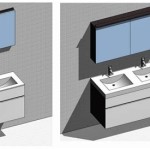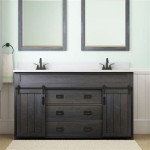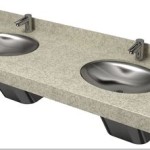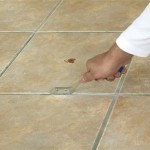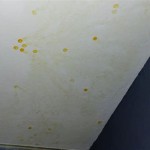What Is the Black Mold in My Bathroom?
Black mold, also known as Stachybotrys chartarum, is a type of fungus that thrives in damp, humid environments. It is often found in bathrooms, basements, and other areas where moisture can accumulate. Black mold is a significant health concern because it can produce mycotoxins, which are harmful substances that can cause a variety of health problems. The presence of black mold is a sign of a moisture problem and requires immediate attention.
What Does Black Mold Look Like?
Black mold typically appears as black, green, or gray patches on surfaces. It can grow on a variety of materials, including drywall, wood, tile, grout, and even paint. Black mold often has a musty or earthy odor, and it may also produce a slimy or sticky substance. It can grow in a variety of forms, from fuzzy to powdery, but its characteristic black color is usually a clear giveaway.
Why Does Mold Grow in Bathrooms?
Bathrooms provide an ideal environment for mold growth due to their high levels of moisture and humidity. Here are some common causes of bathroom mold:
- Lack of ventilation: Bathrooms often lack adequate ventilation, which allows moisture to build up and create a favorable environment for mold.
- Leaks and spills: Leaky faucets, pipes, showerheads, and even spills on the floor can create moisture problems that encourage mold growth.
- Poor air circulation: Insufficient air circulation around the bathroom can create stagnant air that traps moisture and allows mold to flourish.
- High humidity: Taking hot showers or baths releases large amounts of moisture into the air, which can contribute to mold growth.
- Condensation: When warm, moist air from the bathroom comes into contact with cold surfaces, such as windows or walls, condensation can form, creating a breeding ground for mold.
Health Risks Associated with Black Mold
Exposure to black mold can pose serious health risks, especially for individuals with allergies, asthma, or compromised immune systems. Some of the common health problems associated with black mold exposure include:
- Respiratory problems: Mold spores can trigger allergies and asthma, causing symptoms such as coughing, wheezing, shortness of breath, and chest tightness.
- Skin irritation: Contact with black mold can cause skin rashes, itching, and irritation.
- Eye irritation: Mold spores can also irritate the eyes, causing redness, itching, and watering.
- Neurological problems: In some cases, exposure to black mold has been linked to neurological problems, such as headaches, dizziness, and memory problems.
- Mycotoxin poisoning: Black mold produces mycotoxins, which are toxic substances that can cause a variety of health problems, including liver damage, kidney damage, and even cancer.
How to Prevent Black Mold in Your Bathroom
Prevention is key when it comes to black mold. By taking some simple steps, you can significantly reduce the risk of mold growth in your bathroom.
- Improve ventilation: Ensure your bathroom has adequate ventilation by using an exhaust fan during and after showers and baths.
- Fix leaks and spills: Repair any leaks in pipes, faucets, or showerheads promptly.
- Reduce humidity: Use a dehumidifier in the bathroom if necessary to reduce humidity levels.
- Wipe down surfaces: After showering or bathing, wipe down wet surfaces with a towel or squeegee to prevent water from accumulating.
- Clean regularly: Regularly clean your bathroom, including the shower, tub, sink, and floor.
- Use mildew-resistant products: Use mildew-resistant caulk and grout in your bathroom to prevent mold growth.
- Avoid storing personal items: Avoid storing items on the floor or in damp areas of the bathroom, as this can provide a surface for mold to grow.
How to Remove Black Mold
If you discover black mold in your bathroom, it's crucial to take immediate action to remove it. It's important to note that attempting to remove mold yourself can be dangerous if not done properly. The following guidelines can help you assess if DIY or professional help is needed:
- Small areas: For small areas of black mold growth, you can use a bleach solution to clean the affected area. Make sure to wear protective gear such as gloves, a mask, and eye protection.
- Large areas or persistent mold: If the mold growth is significant or continues to reappear, it's best to contact a professional mold remediation company. They have the expertise and equipment to safely and effectively remove mold and identify the source of the moisture problem.
Remember, black mold is a serious issue that requires prompt action. Proper ventilation, regular cleaning, and prompt attention to moisture problems are crucial to preventing black mold growth in your bathroom.

What Do About Black Mold In The Bathroom Bob Vila

Why Is There Black Mold On My Bathroom Ceiling Medics

Is Black Mould In The Bathroom Dangerous Dbs Bathrooms

Killing Preventing Black Mold In The Bathroom

Black Mold In Shower Is It A Cause Of Worry And What To Do About Aqa

Why Is There Mold On My Bathroom A J Property Restoration Dk

Black Mold In The Shower How To Clean It Kitchen With Matt

Black Mold On Your Bathroom Ceiling Read This First

What To Do If You Find Toxic Black Mold Safewise Com

How To Remove Black Mold From Your Shower Clean Tips
Related Posts
